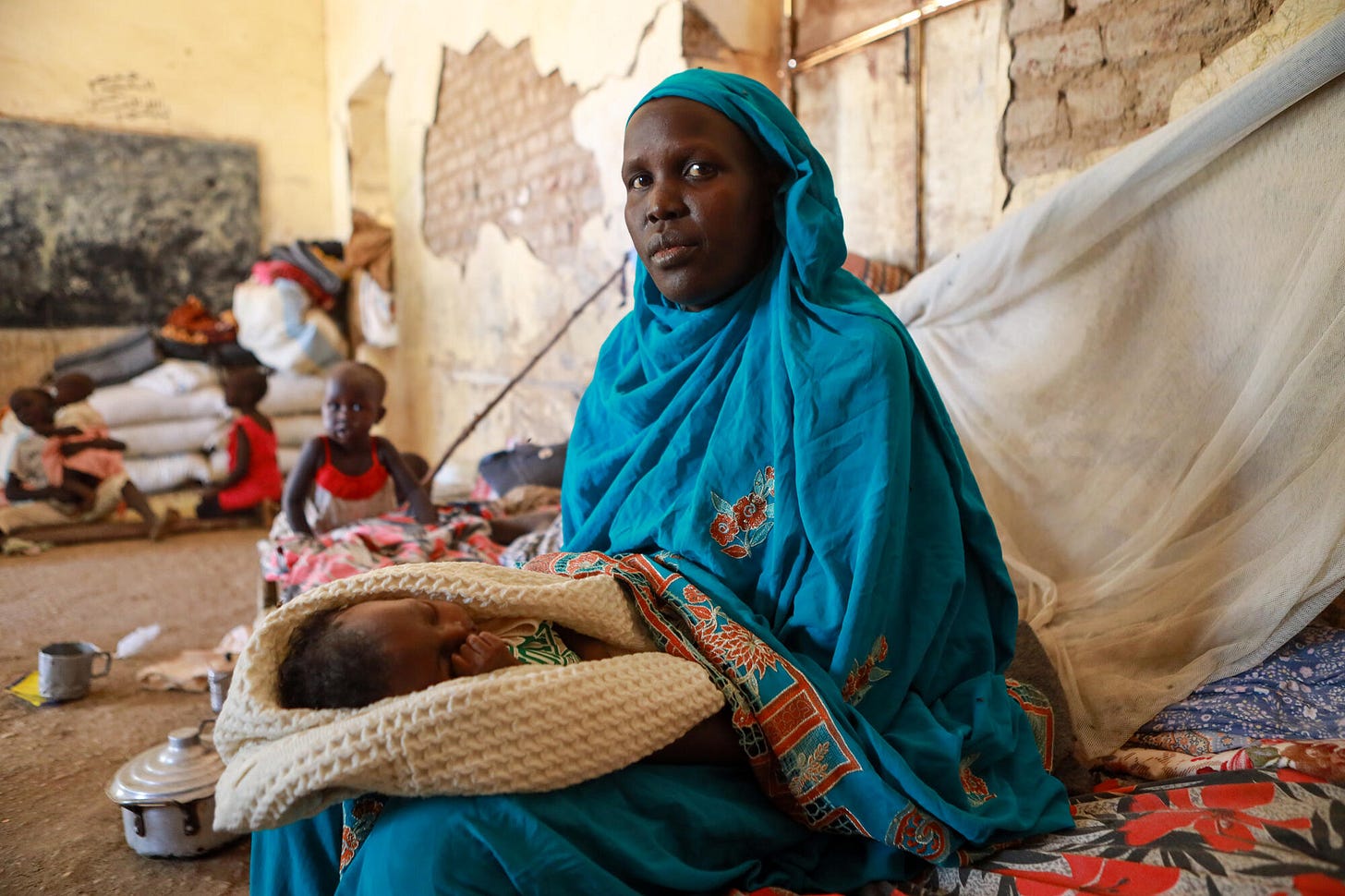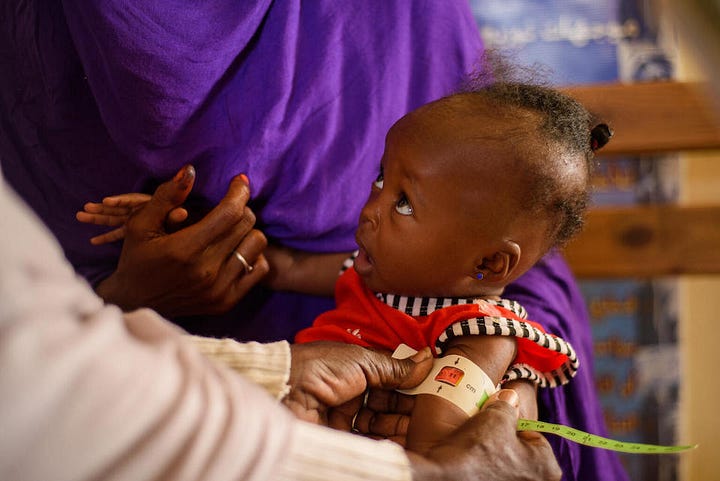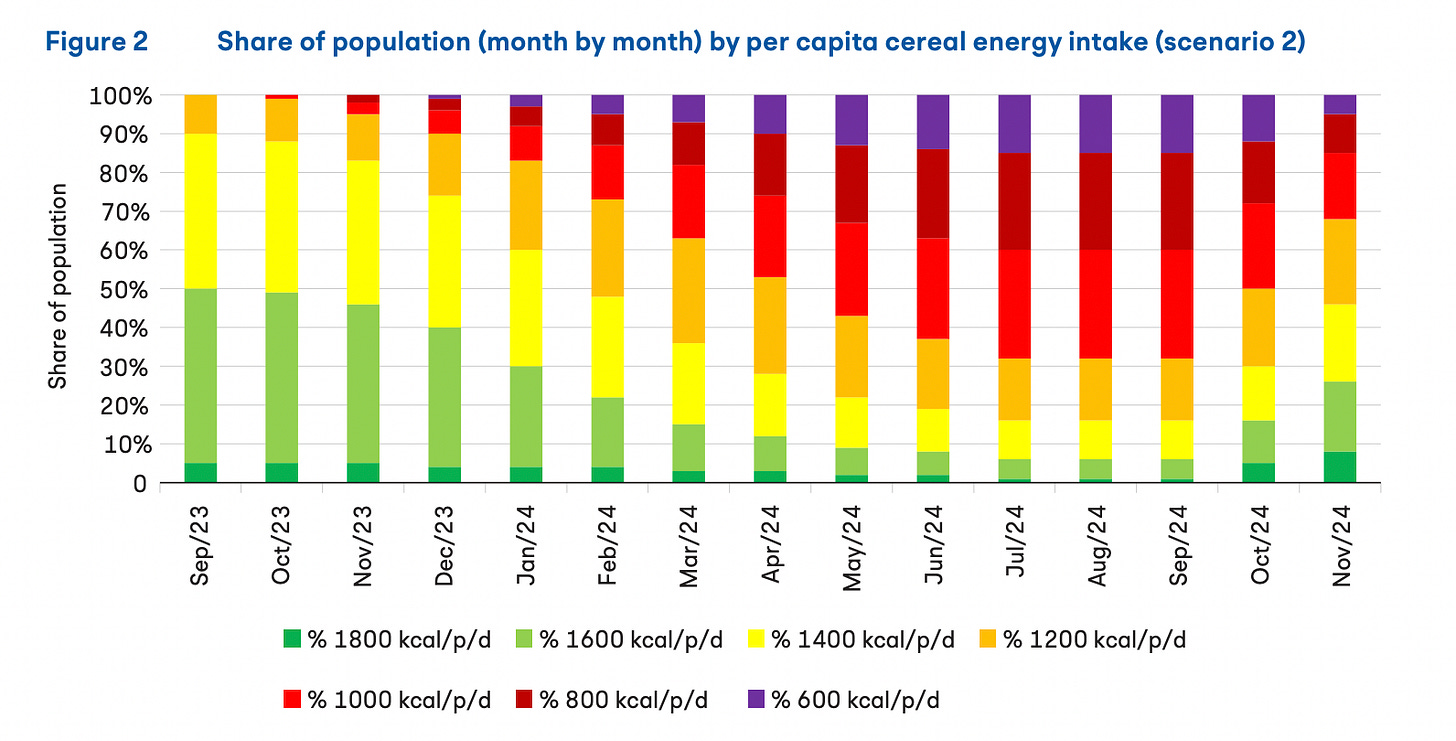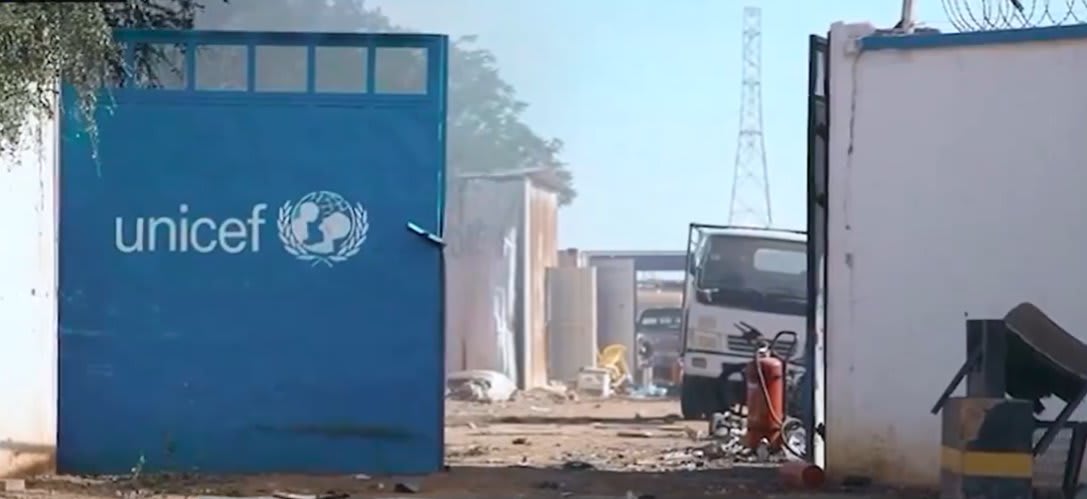Sudan's descent into famine
'Rapidly becoming the world's largest hunger crisis in decades'

The last major famines in Sudan occurred in the 1980s and 1990s as a result of drought and civil war in the country’s rural peripheries. These were regional and localized famines that nevertheless killed hundreds of thousands of people.
By contrast, the greatest of all Sudanese famines was countrywide, occurring in 1889-1890, not long after the fall of the Turco-Egyptian government in Sudan’s agricultural heartland. Called by Sudanese “the Famine of the Year Six” (referring to 1306 AH in the Islamic calendar), it swept through not only the rain-fed agricultural areas but also the Nile Valley where irrigated agriculture was practiced.
It stemmed from a combination of drought, insecurity, political upheaval, and the heavy toll of feeding the massive armies of the new Mahdist state. A blockade of grain imports by remnants of the defeated regime based at Port Suakin, implemented by the Sirdar Herbert Kitchener, worsened the crisis.
Similar conditions exist in Sudan today: the central government and its institutions have largely collapsed, war and pillage have affected the surplus-producing areas, a militant movement without governing experience rules large parts of the country, and a military rump state on the Red Sea coast is obstructing humanitarian access.
People are already starving in parts of Sudan, and food security experts are forecasting a wider crisis starting mid-year, and continuing next year.
Evidence of the deepening crisis comes from Zamzam Camp in Darfur, where Médecins Sans Frontières (MSF) recently carried out a nutrition and mortality survey. Almost a quarter of children screened were found to be acutely malnourished, with 7% having severe acute malnutrition (SAM). The figures were about twice as bad for children under the age of two years old.


“We estimate that at least one child is dying every two hours in the camp. Our current estimate is that there are around 13 child deaths each day,” said Clare Nicolet, head of MSF’s emergency response in Sudan, summarizing the report’s findings.
Forty percent of pregnant and breastfeeding women were also found to be malnourished. In a press release, MSF pointed out that the crude mortality rate was 2.5 per 10,000 people per day, which exceeds one of the standard criteria for declaring a famine (IPC Phase 5).
The medical aid organization said it would rapidly scale up its response to provide treatment for children in the most critical condition. It added, however, “The scale of the disaster requires a far greater response than we can provide alone.”
Anecdotally, there are also reports of starvation at other Darfur camps, and in pockets of the capital affected by fighting. Many war-displaced people in the eastern and northern regions also face hunger, though not yet at the most severe level.
Clingendael, the Netherlands Institute of International Relations, published a policy brief February 9th warning, “Sudan’s trajectory toward catastrophe is certain and the risk of famine is very high.”
In the most likely scenario, “seven million people will face catastrophic levels of hunger by June 2024,” and a half million people will die. The famine will affect “much of Sudan except for some surplus areas.”
The other two scenarios vary the projections of cereal production and imports, as well as humanitarian food deliveries. In the most optimistic scenario, 200,000 people will die and the famine will remain “localized.” In the more pessimistic scenario, a million people will die and the famine will be countrywide. This scenario is “worst-case but not unlikely.”
The paper was written by Anette Hoffmann, a Senior Research Fellow at Clingendael’s Conflict Research Unit, with modeling work by food security expert Timmo Gaasbeek, and input from Alex de Waal and Edward Thomas, researchers who have studied past Sudanese conflicts and famines.

Hoffmann asserted that Sudan is “rapidly becoming the world's largest hunger crisis in decades.” She called for concerted international action to end the war, a massive scale-up of food aid, direct mobile money transfers to vulnerable people, and financial injections to support farms in areas that aren’t yet affected by fighting and where markets are still functioning.
Hoffmann added,
“At least as important as food aid is access to water, sanitation and hygiene facilities. While hunger weakens people (and especially children), it is often water-borne diseases that kille them… Hygiene and sanitation are serious challenges, especially in places where IDPs [war-displaced people] concentrate. For the last several months, incidents of cholera have been reported. With the onset of the rains in July, diarrhea and other diseases will likely spread further.”
Famine relief will be difficult to scale
Aid access in Sudan is constrained by fighting, bureaucratic impediments, and limited funding. For example, in the North Darfur capital El Fasher, where Zamzam Camp is located, aid work has largely ground to a halt.
According to MSF, ”Staff no longer receive salaries, equipment and medicines are in short supply, as are fuel for generators, water and other supplies that are needed to keep health facilities running. Malnutrition programmes that were once present in El Fasher are non-existent.”

The UN World Food Programme (WFP), which supplied cereals for about 2% of the population prior to the current civil war, faces major challenges as it attempts to scale up its operations to meet a surge in new demand. WFP said in a press release February 2 that it cannot access many areas where people are hungriest:
“WFP is currently only able to regularly deliver food assistance to 1 in 10 people facing emergency levels of hunger (IPC phase 4) in Sudan. These people are trapped in conflict hotspots, including Khartoum, Darfur, Kordofan, and now Gezira, and for assistance to reach them humanitarian convoys must be allowed to cross the frontlines. Yet it is becoming nearly impossible for aid agencies to cross due to security threats, enforced roadblocks, and demands for fees and taxation.
For example, 70 WFP trucks were stuck in Port Sudan for over two weeks in January waiting for clearances. Another 31 trucks have been parked empty and have been unable to leave El Obeid for over three months, according to the press release.
Eddie Rowe, WFP’s director in Sudan, said, “Every single one our trucks need to be on the road each and every day delivering food to the Sudanese people, who are traumatised and overwhelmed after over nine months of horrifying conflict. Yet life-saving assistance is not reaching those who need it the most, and we are already receiving reports of people dying of starvation.”
This time is different
The collapse of the government, market institutions, and the humanitarian system have coincided with a vast increase in humanitarian need. Several factors have made Sudan’s current crisis worse than previous ones. First, the fighting has ravaged the capital, which is one of the largest cities in Africa, as well as other cities, displacing millions of people while leaving others desperately stranded.
In past Sudanese wars, by contrast, Khartoum was a refuge for people fleeing the hunger-affected peripheries. Khartoum was also the hub for the economy, government, and the healthcare system; its destruction has accelerated a catastrophic economic collapse, putting millions out of work.
Second, the war has spread into Sudan’s most productive agricultural areas. The USAID-funded Famine Early Warning Systems Network (FEWS NET) released an alert February 1 highlighted the fighting in Sudan’s breadbasket, Al Jazira State, which the Rapid Support Forces attacked in December:
“Attacks in mid-December on Wad Madani and surrounding towns in Al Jazira that expanded into parts of Sennar, White Nile, and South Kordofan in January have interrupted main season harvesting of sorghum and millet, worsening already below-average expectations for the national cereal harvest. The fighting has also interrupted the cultivation of winter wheat in the Gezira irrigation scheme, which typically accounts for 40-50 percent of total wheat production, and damaged critical irrigation infrastructure. While Sudan normally relies on imports to meet 80-85 percent of annual wheat consumption requirements, the reduction in domestic production will compound already large import deficits.”
The greatest risk of famine is expected by mid-year, from June to September, and again in mid-2025. Seasonally, this is the the period of highest malnutrition prevalence in Sudan. Known as the “lean season,” it is the period after the exhaustion of the previous harvest, when prices of food are typically at their highest.
“We are expecting major impacts on national food availability,” said FEWS NET Senior Food Security Analyst Emily Turano. “The lean season… is expected to come as early as March. If nothing changes between now and then, we can expect deepening hunger in El Geneina, Omdurman, and other high-risk areas of Sudan.”
According to Nicolet, the MSF official, they are preparing for a drastic increase in malnutrition cases over the coming months, peaking between April and September.
This crisis has unfolded with stunning speed. In less than ten months, a third of the population—an estimated 16 million people—were plunged into food insecurity, according to WFP.
This has caught humanitarian donors by surprise. The UN last week appealed for a budget of $4.1 billion for its humanitarian agencies and partner nonprofits. It is likely to receive on a small fraction of that amount; currently the appeal is 3.5% funded.
If fighting spreads, the disaster will become even worse. The Rapid Support Forces (RSF), the rogue paramilitary controlling most of the capital and the country’s west, have threatened to attack new areas that haven’t yet been directly affected by fighting, including Sennar, Kassala, Shendi, and Port Sudan.
Not only would this further disrupt agricultural production, it would trigger further displacement of millions of people, while also re-displacing many people who are already vulnerable and living on the brink. The majority of Sudanese internally displaced persons now live in informal settlements, schools, abandoned buildings, and other gathering sites in such cities as the ones mentioned. They endure overcrowding, shortages of food, and lack of access to healthcare and sanitation.
Another key risk is that the RSF could attack Gedaref State, which has seen skirmishes on its western border. The state is host to Sudan’s largest silos and food storage capacity, including strategic reserves of the Agricultural Bank of Sudan. During the RSF’s recent invasion of Al Jazira State, WFP warehouses were looted.
Michael Dunford, WFP’s Regional Director for Eastern Africa, recently wrapped up a visit to Port Sudan, which is the agency’s operational headquarters following months of fighting in the capital. In a video released after his visit, he called for “a political solution, peace funding, and access,” in order to mitigate the unfolding disaster.
Likewise, Clementine Nkweta-Salami, the UN Humanitarian Coordinator for Sudan, wrote on social media Saturday, “Despite being the world's largest displacement crisis, the human tragedy unfolding in Sudan and neighbouring countries is sorely lacking global attention, support, and action. We can, and must, do more.”
Support our journalism
Thank you for reading Sudan War Monitor. Please subscribe or share to help us raise awareness about the crisis and provide reliable, timely information.
Our subscription interface is managed by Substack, a well-known technology company. If you later change your mind, you can easily unsubscribe with one click.

